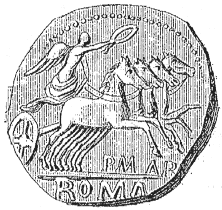Money
Today, let's talk about money. The University of Houston's College of Engineering presents this series about the machines that make our civilization run, and the people whose ingenuity created them.
Abstraction is at the root of invention. And one of the more interesting inventions was replacing real goods and services with the abstraction of goods and services that we call money -- a medium of exchange. Now how do you suppose that happened?
It actually took place in several stages. The first stage dates from the dawn of recorded history. As people from different places bartered and traded their produce, they needed frames of reference to set the value of goods. So they started referring the value of everything to such commonplace merchandise as cattle or metal.
This process was generalized as early as 4000 BC by using the weights of certain metals -- usually gold, silver, or copper -- as a reference. You've heard the Bible refer to something called a talent. A talent was actually a unit of weight. 50 or 60-pound copper talents were a regular medium of exchange around the Mediterranean by the 9th century BC.
The next step was for governments to certify a particular medium of exchange. The Chinese did that in the 8th century BC by inscribing certain exchange goods. A century later the Ionians put government stamps on their talents.
And finally, coins -- pieces of valuable metal inscribed with a government's guarantee that they had value, even though they were separate from the actual goods they represented. Coins date from just after 650 BC, when the Lydian Greeks first made them.
We use the phrase "rich as Croesus" when we speak of great wealth, because the 5th-century-BC Lydian King Croesus was famous for minting standard coins made of a natural gold-silver alloy. Within a few centuries, Greek coins had reached an artistic level that wouldn't be matched until modern times.
The next level of abstraction was paper money, which has no value itself but which represents material goods that are held elsewhere. The Chinese used paper notes as early as the 8th century AD, but the widespread use of paper came about in England and France only 200 years ago.
Today, the whole process is being taken into computers. Our balance of cows, autos, and labor is being reduced to electronic record-keeping -- to credit cards and fund transfers. This is a level of abstraction in which all our goods and services are reduced to an agreed-upon figure of merit -- call it the dollar or the yen -- and weighed against one another in electric pulses. We still barter with each other, but the medium of exchange has become completely invisible.
I'm John Lienhard, at the University of Houston, where we're interested in the way inventive minds work.
(Theme music)
Porteous, J. Coins. London: Octopus Books Ltd., 1964.
For more on coins, see Episode 163.
This episode has been greatly revised as Episode 1347.

(Clipart)
Typical picture of a quadriga on the back of a Roman coin